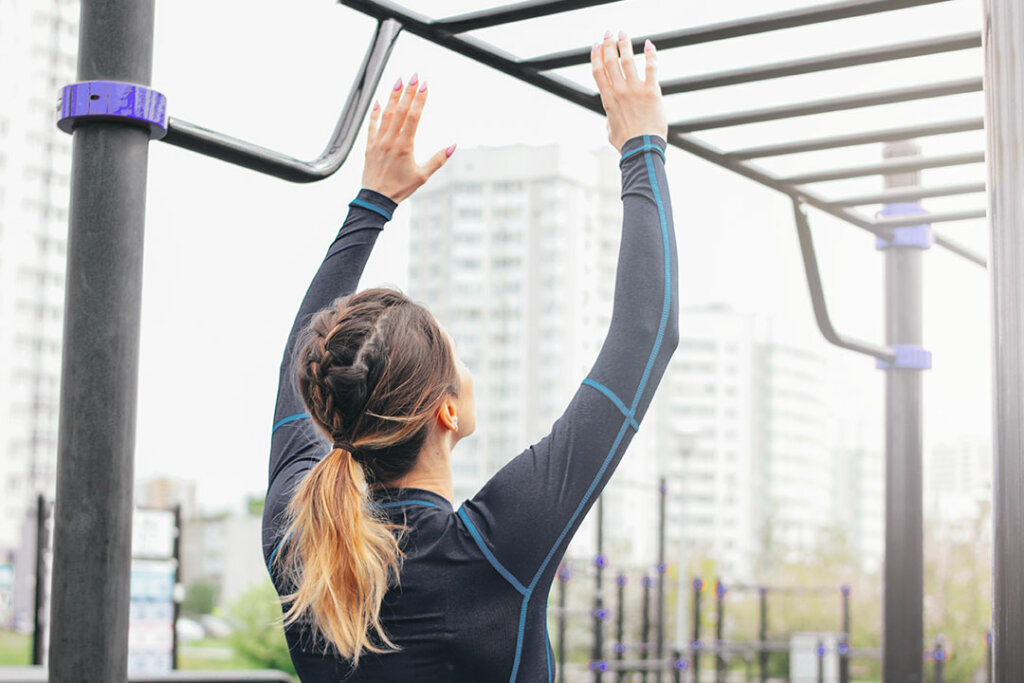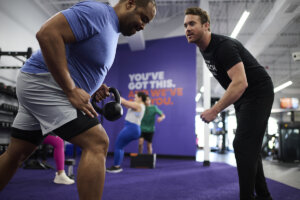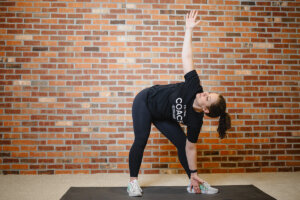Pull-ups are one of the gold standard exercises of upper-body strength, but they’re not just for the super fit. While pull-ups can be intimidating, they are achievable. Here, Anytime Fitness Coach Heather shares her pull-up journey and explains how you can train to become a pull-up master.
“Pull-ups are near and dear to me because they were such a huge goal of mine during my first few years in the gym,” says Coach Heather. “I worked with my coach consistently for months to strengthen my back, which had always been the weakest part of my body.” Pull-ups were a key piece of her strength training regimen. Why? Pull-ups use almost every muscle in the body, working the lats, shoulders, biceps, core, and more.
The Functional Benefits of Pull-Ups
Completing a pull-up takes more than just muscular strength — it also requires joint stability, core strength and stability, and grip strength. So, what’s the benefit? According to Coach Heather, pull-ups can improve quality of life by making everyday tasks easier, preventing injuries, and improving posture.
Are you ready? Here are five exercises you can do to work your way up to a full pull-up.
1. Lat Pulldowns
Lat pulldowns mainly target the latissimus dorsi — the largest muscle in your back — increasing your spinal stability and helping you prevent injury.
To perform this move, use a lat pulldown machine or cable machine. Here’s how to perform a pulldown:
- Using a weight that’s comfortable for you, start with a wide grip on the bar.
- With your feet flat on the floor, pull the bar down until it’s level with your chest, squeezing your shoulder blades together. Try to keep your upper torso stationary and engage your abdominal muscles as you pull.
- Once the bar is level with your chest, slowly raise the bar back up with control.
Note: Use a weight that challenges you but doesn’t cause your form to falter. You should be able to complete three sets of six to eight reps — the ideal range for building strength.
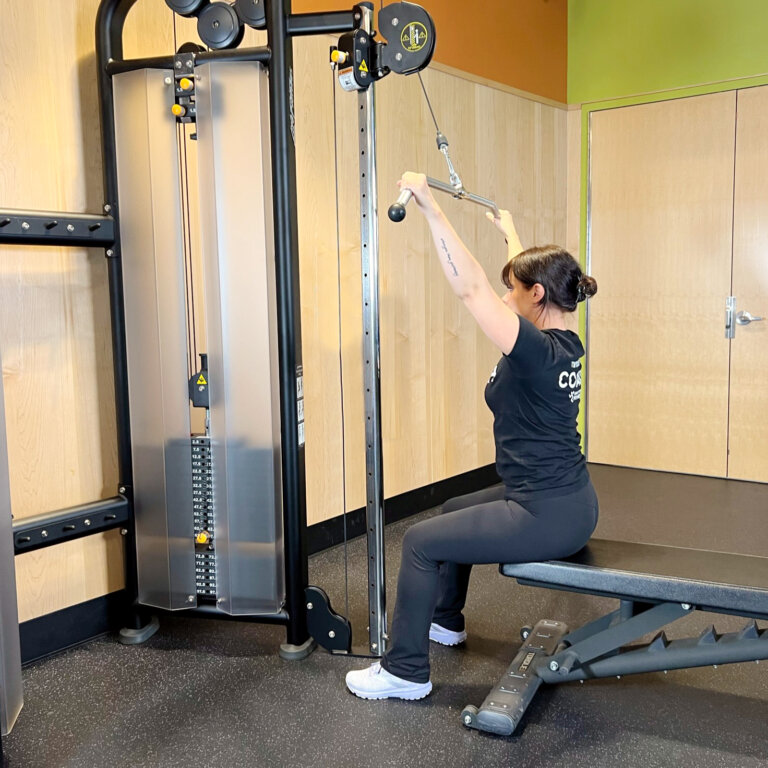
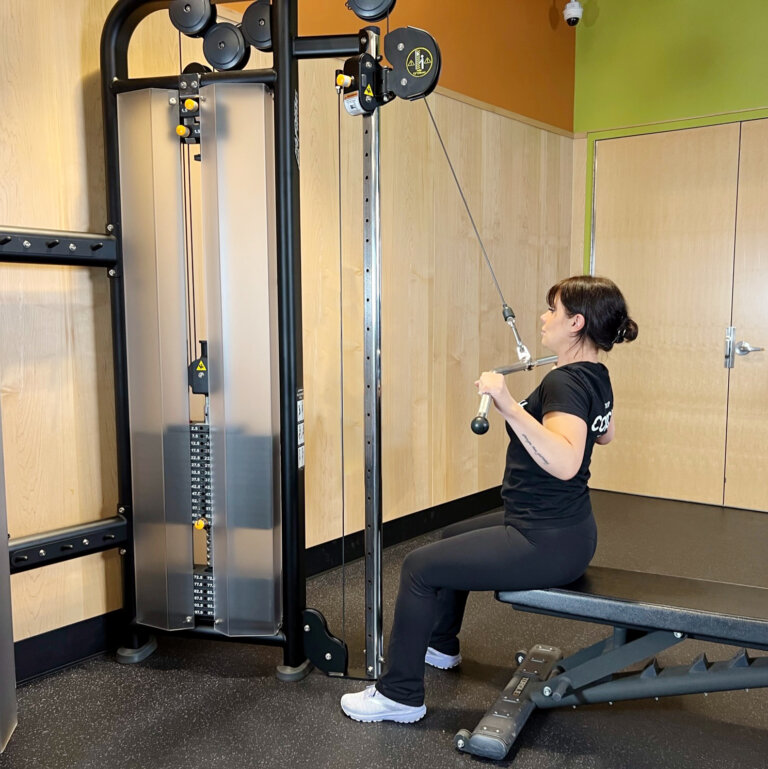
2. Barbell Deadlifts
“Deadlifts are a quintessential exercise for all posterior muscles,” Coach Heather says. Performing deadlifts can help you develop your back muscles and grip strength, which are key to achieving your pull-up goals.
To complete this move, start by loading a barbell with a comfortable but challenging weight — for beginners, the weight of the bar itself may be enough to start. Here’s how you do it:
- Stand behind the barbell with your feet shoulder-width apart.
- Use an overhand grip, with the tops of your hands facing outward.
- Bend your knees slightly and send your torso forward while keeping a flat back.
- Grab the bar with your palms facing your body.
- Using your glutes and core, stand up tall and pull the barbell up off the ground. Keep your arms straight as you lift, and bring your hips forward.
- Once you have stood up, bend your knees and slowly lower the bar back to the ground.
Remember to keep the bar close to your body during every rep to prevent injury. Complete three sets of six to eight reps.
There are many variations of deadlifts. You can use a kettlebell, dumbbell, or elastic band instead of a barbell, or try a sumo deadlift if you’re feeling creative.
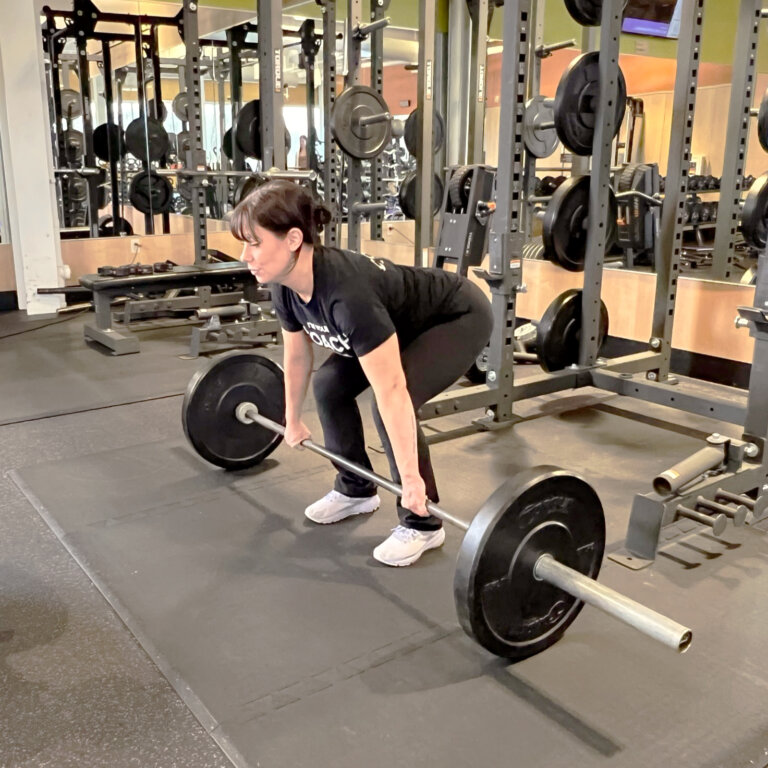
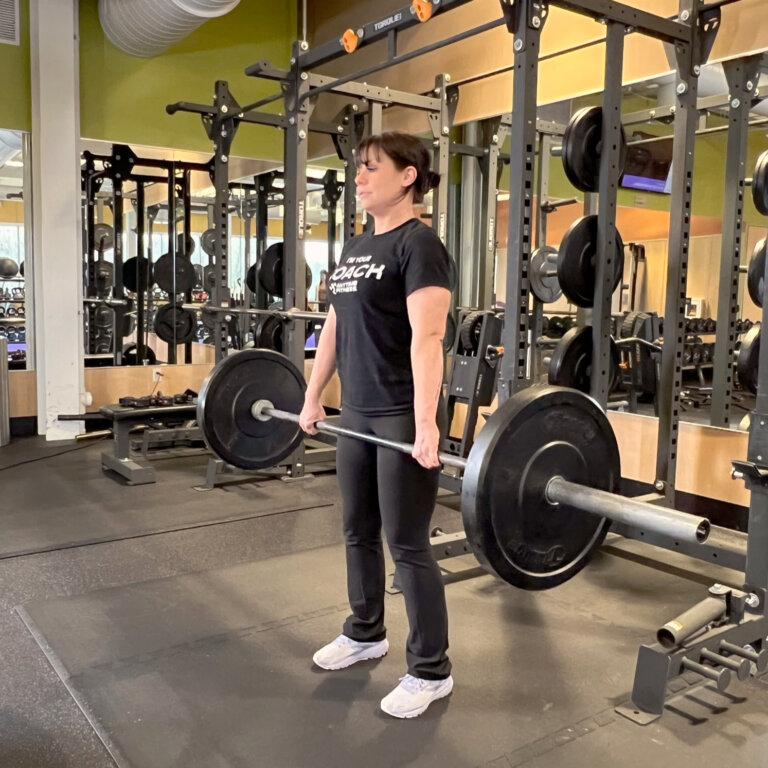
3. Inverted Rows
The inverted row targets more than just your upper body — you’ll also use your glutes and hamstrings to complete this body-weight exercise. Being in a horizontal position, rather than a vertical one, makes inverted rows easier to perform than a traditional pull-up.
For this move, you’ll need a rack with an adjustable bar, then follow these steps:
- Set up a bar low on a rack.
- Get underneath the bar in a reverse table-top position, holding the bar from below.
- Pull yourself up to the bar, keeping your arms at a 90-degree angle.
- Slowly lower yourself down with control.
Do as many inverted rows as you’re able. If you’re looking for more of a challenge, try straightening your legs rather than keeping your knees bent.
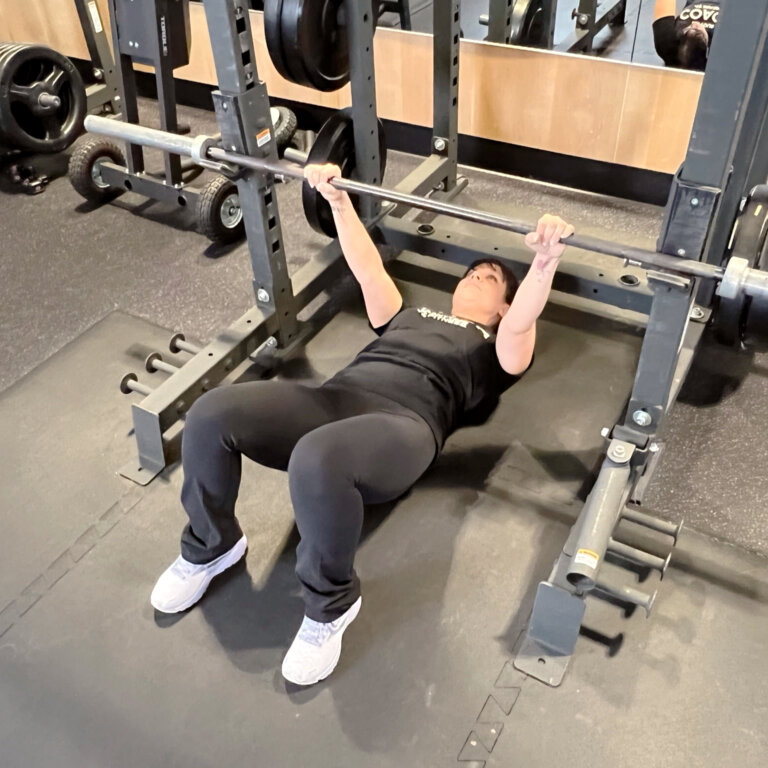
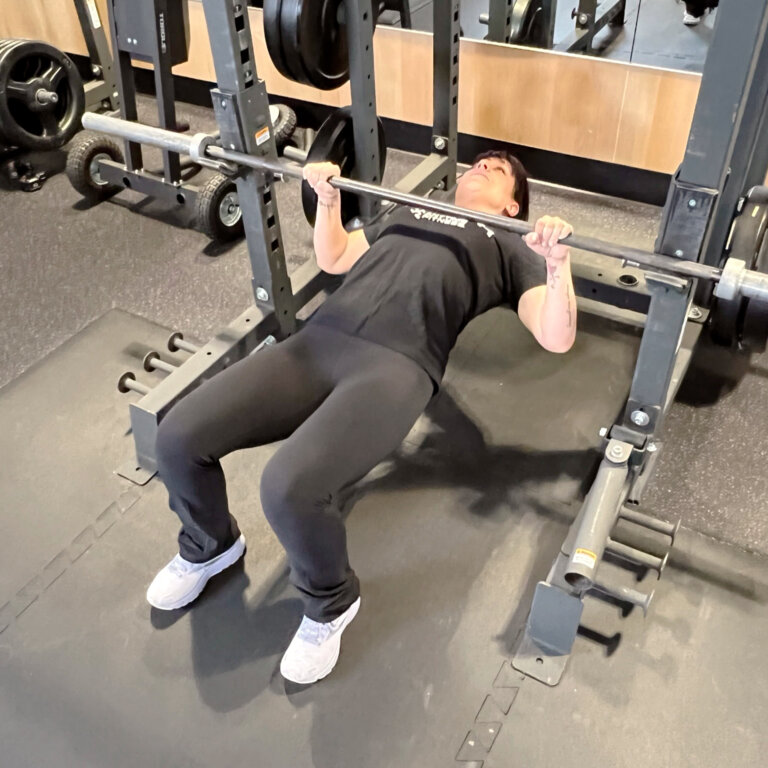
4. Band-Assisted Pull-Ups
“The assisted pull-up is a logical exercise to work up to the full bodyweight pull-up,” says Coach Heather. She prefers to use a band for assistance rather than a machine. Why? The band has more tension when you’re at the bottom in the dead-hang position; when you are at the top of the pull-up, there will be more slack in the band. The band-assisted pull-up allows you to experience a partial rep where you don’t get any help, which will help you get to a full pull-up on your own faster.
Grab a resistance band and follow these steps to complete a band-assisted pull-up:
- Wrap an elastic band around the top of a rack.
- Step up and place one of your feet in the band.
- With the band beneath your feet, grab the top of the rack.
- Pull yourself up, keeping your feet on the elastic band.
- Slowly lower yourself back down.
Do as many reps as you can until you can’t complete any more. Give yourself a break, then get right back to work! Do two to three sets — it’s time to build up that muscle endurance.
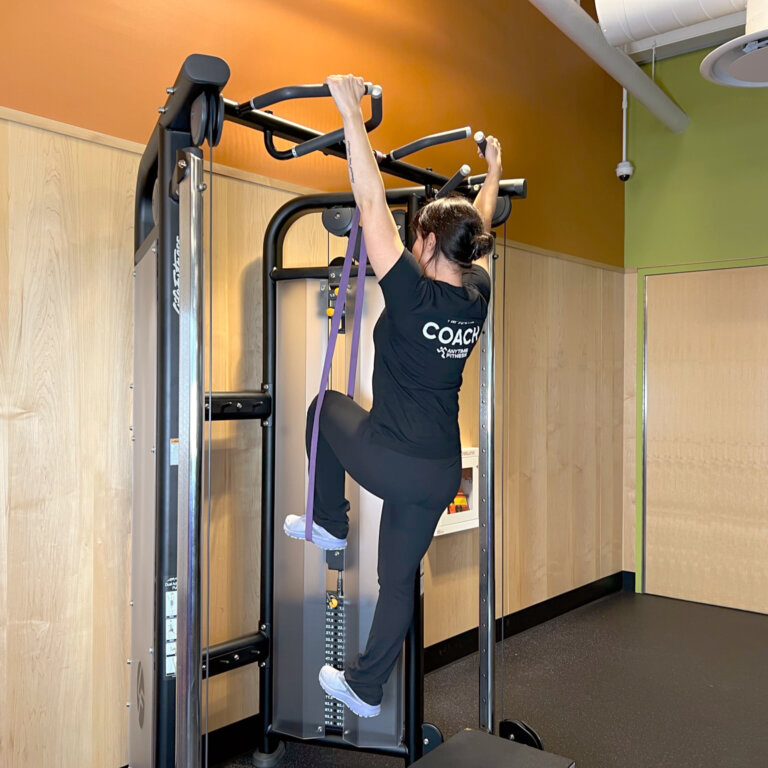
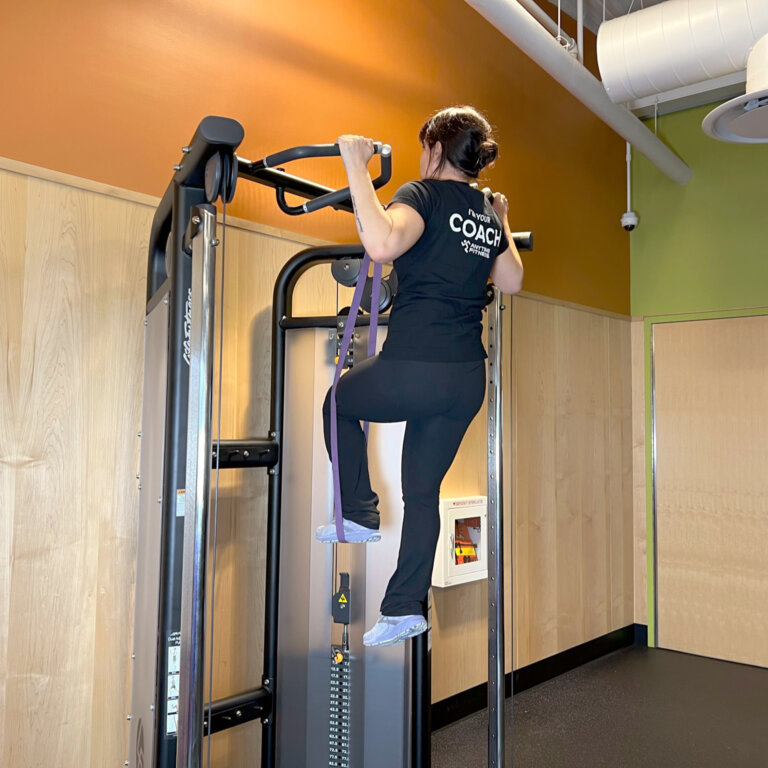
5. Negative Pull-Ups
The negative pull-up is very similar to the band-assisted pull-up, but it will get you one step closer to completing the full bodyweight pull-up. Here’s how to do it:
- Stand on a block in front of the rack.
- Using the block for assistance, pull yourself to the top of the bar.
- At the top, release your feet from the block, keeping your upper body engaged.
- Slowly lower yourself down with control.
Just like the band-assisted pull-up, do as many reps as you can for two to three sets.
Now that you’ve got the motion down, it’s time to try the real thing.
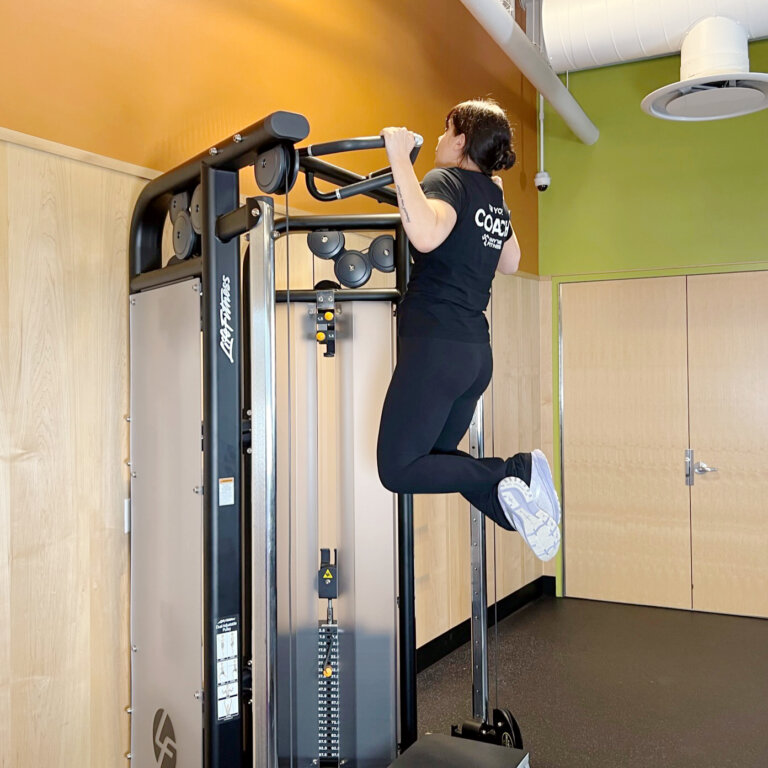
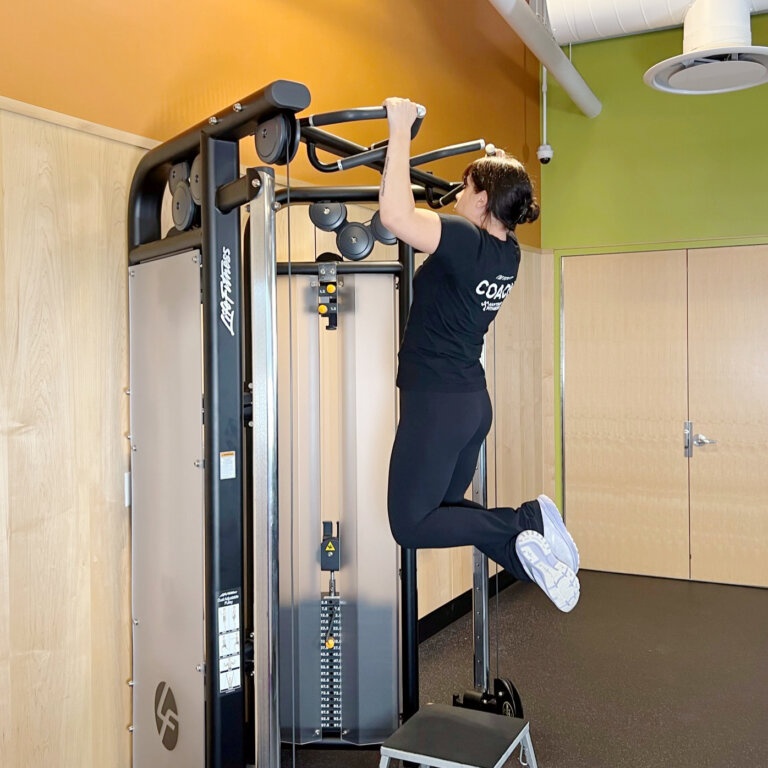
The Art of the Pull-Up
Let’s get to work! As you train for your first pull-up, remember: Consistency is key to mastery. Achieving a pull-up takes a considerable amount of hard work, time, and patience. “For this reason, being able to do a pull-up comes with a huge badge of honor,” says Coach Heather.
How To Do a Pull-Up
Here are the steps you’ll need to complete a pull-up:
- Stand on a block or bench below the bar or rack.
- Grab the bar with your hands shoulder-width apart.
- Allow your body to hang from the bar with your arms fully extended.
- Pull upward to lift your chin above the bar, engaging your core and pulling your shoulder blades down. Aim to get your chin above the bar.
- At the top, slowly lower yourself down and return to the starting position.
You’ve done it — you completed your first pull-up!
Next step: Consistently train and shift your goals. Do you want to do five pull-ups on your own? Or 10? Regularly practice pull-ups to continuously improve your overall strength and stability.
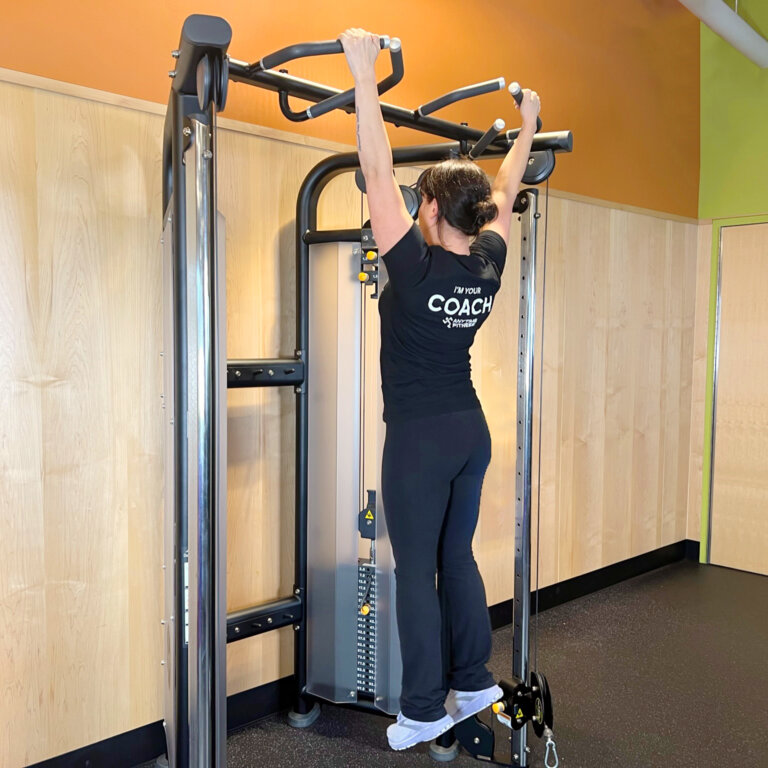
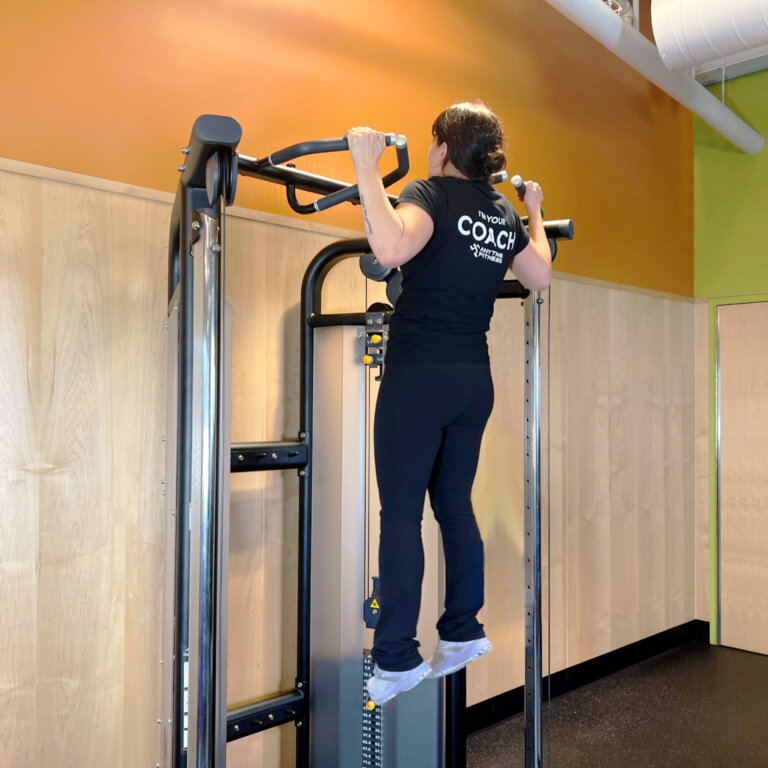
Pull-Up Training Tips
Learning to do a pull-up can be a winding journey, so there are some important things to keep in mind along the way. First, don’t deny your body the chance to adapt to the challenge of a bodyweight pull-up. Often, people rely too long on assisted pull-ups before trying them without assistance.
Keep in mind: What you train will be your result. Coach Heather says, “Even if you can do one rep, or maybe half a rep, trying without assistance and practicing regularly is the surefire way to achieve pull-up mastery.”
Remember that your journey will look different from everyone else’s, but working toward a pull-up is rewarding in its own right. Stay patient and consistent, and you’ll be well on your way to a stronger back and core — not to mention improved mobility, body control, and posture.
Feeling accomplished? Hungry for more? It’s time to take on your next challenge: mastering the push-up!
